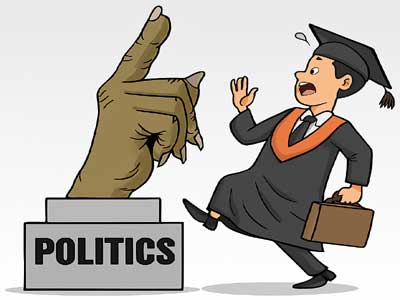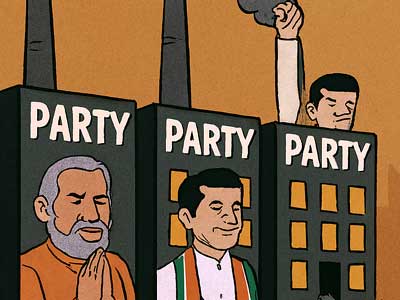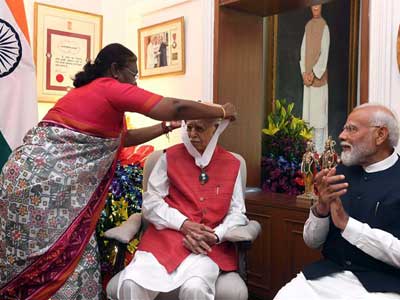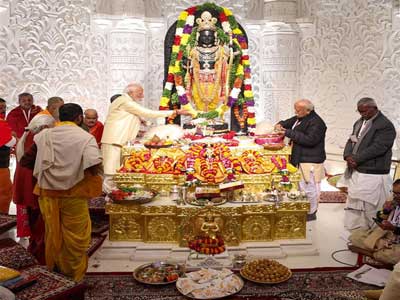Despite numerous demands over the years, there seems to be no possibility of establishing a High Court bench in Agra. The Jaswant Singh Commission had recommended the establishment of a High Court bench in the city of the Taj, for which BJP leaders had been agitating for years, but now everyone has forgotten about it. The demand for Harit Pradesh or Braj Pradesh has also been cold storage.
Uttar Pradesh, with 80 MPs and more than 400 MLAs, has a population of over 200 million, but it is not capable of accelerating development or bringing about any fundamental changes in power equations. No one knows which development model our state is following.
Read in Hindi: उत्तर प्रदेश के पुनर्गठन और आगरा में हाईकोर्ट बेंच की सख्त जरूरत
Most sociologists and even economists have supported the rational reorganization of the political landscape on a logical basis. Political commentator Paras Nath Chaudhary says, "Since the formation of states on a linguistic basis in 1956, India's political map has largely remained stable. The argument for creating states on a linguistic basis appeals to a sense of cultural identity, but it often overlooks critical factors such as population distribution, geographical area, administrative efficiency, and natural resources. The result is a complex and cumbersome governance system that can hinder effective administration and equitable representation."
The need for rational and practical redrawing of political boundaries has become more pressing, especially in states like Uttar Pradesh and Madhya Pradesh, where size matters. India's size and diversity mean that a one-size-fits-all approach to governance is inadequate. States like UP and MP are large not only in terms of area but also in population. For example, UP's population exceeds 200 million, making it the most populous state in the country. This vast size complicates governance and administration. The vastness leads to various regional needs that are often overlooked, causing discontent among different communities and regions.
Senior journalist Ajay Jha says, "It is impractical for a single legislative assembly and administrative structure to address the issues faced by such a diverse population. Dividing UP into smaller states could facilitate more focused governance, allowing each new entity to tailor its policies and initiatives to its specific demographic and geographic needs."
Demographic balance is another crucial factor in the reassessment of state boundaries. Rapid population growth and migration patterns since 1956 have significantly altered the demographic landscape. Once homogeneous areas have become a mix of cultures, languages, and social groups, like Karnataka.
According to Mysore-based social activist Mukta Gupta, existing administrative units should reflect these changes to ensure proportional representation in legislative assemblies and parliament. "Rationalizing representation is essential for a functioning democracy, ensuring that the voices of diverse regions and communities are heard and adequately represented," she adds.
Lok Swar President Rajiv Gupta says, "Additionally, the creation of new High Court benches in various regions of large states has been a consistently proposed solution to address access to justice. Currently, many regions have to rely on a central High Court, leading to delays and inefficiencies. Establishing High Court benches in different geographical areas would reduce the burden on existing courts and make legal recourse more accessible to citizens. Along with the creation of smaller states, this step could streamline the judicial process and enhance regional governance."
The demand for state reorganization has been made by all parties, with political figures and parties expressing support for creating smaller administrative units. For example, BSP supremo Mayawati has explicitly demanded the division of UP in the state assembly, recognizing the limitations imposed by its size on effective administration.
"Acceptance from various political spectrums indicates a broad sentiment that dividing these large states is not only a good idea but a necessary one, explains social scientist TP Srivastava. Importantly, the historical context shows that previous divisions were often ad hoc and reactive to political pressure and public agitation rather than based on well-researched, scientific rationale. These hasty reforms have led to a landscape that may not work best for the country in the long term.
A systematic approach to redrawing boundaries, considering population, area, and natural resources collectively, would enable a more coherent and efficient governance structure. The argument for redefining India's political map goes beyond administrative efficiency. It highlights the democratic principle of fair representation and the need for a governance structure that truly reflects the country's diverse socio-economic realities.


















Related Items
Agra’s famous Vaidya Gali wears a deserted look on Dhanwantari Jayanti
Yogi’s Uttar Pradesh vs Siddaramaiah’s Karnataka
Why do tourists flee Agra after visiting Taj Mahal?